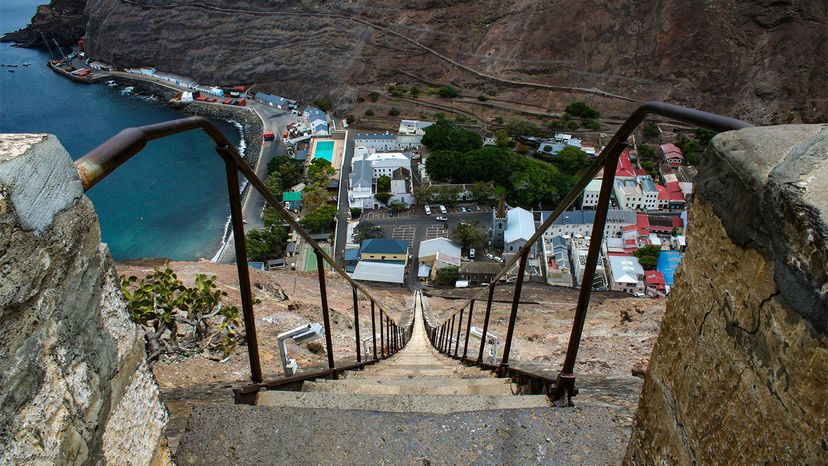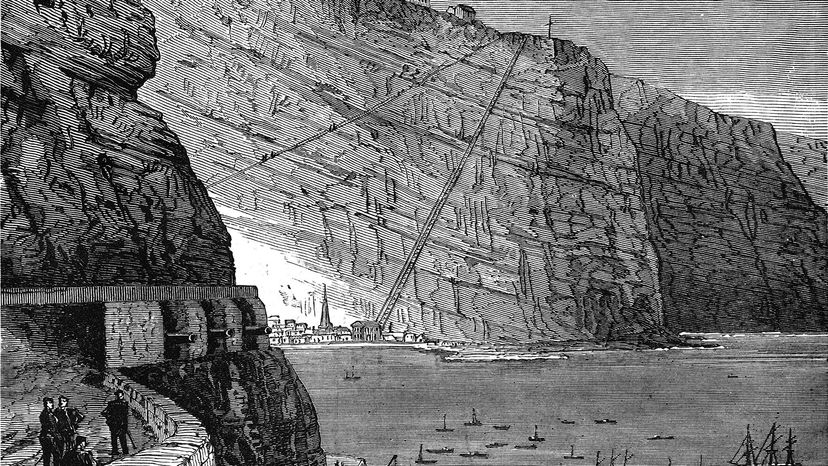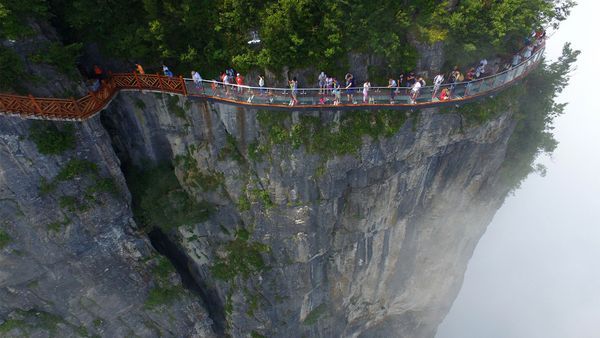
In the middle of the South Atlantic Ocean, right smack between Africa and South America is a small, mountainous island called St. Helena, part of a British Overseas Territory consisting of the island of St. Helena, Ascension Island and the archipelago of Tristan da Cunha. On the northwestern coast of St. Helena sits Jamestown, the capital of the island, tucked between two high hills — some might even call them mountains.
One of the first things you notice about the island when you approach it by sea is the longest, most steeply pitched staircase you've ever seen running up the side of a cliff that flanks the town. This staircase is called Jacob's Ladder, and it's really something.
Advertisement
St. Helena is a British Overseas Territory, established in 1657 by the East India Company — a business that colonized most of the Eastern Hemisphere over the course of about two centuries. The company itself ruled over the island until it was taken over by the British government in 1707, and it built a fort on the cliff that looms over Jamestown soon after receiving a charter to govern the island in 1660. Very early maps of Jamestown show various routes to ascend from the valley floor to the fort, including a treacherous zigzag trail and a rope ladder. By the 1780s, maps show the trail was improved, and the rope ladder had been removed.

In the 1820s, a pulley-powered machine called the Inclined Plane was built to hoist cargo up the cliff to the fort. The Inclined Plane was invented and built by a local engineer and consisted of two cars that ran along a pair of iron rails set on wooden crossties. A team of three donkeys powered a mechanism at the top that pulled the cars up the mountain with iron chains. The Inclined Plane was deemed too dangerous to accommodate human passengers — it rose out of the valley at a 40-degree angle — but hauled a lot of supplies to the fort and manure out of Jamestown to the farmers growing crops in the interior of the island. The Inclined Plane was the pride of Saint Helena from its completion in 1829 until 1871, when it was decommissioned due to the wooden cross ties being eaten to pieces by ants.
The staircase that is Jacob's Ladder is all that remains of the Inclined Plane. It's 925 feet (282 meters) long, scaling a cliff face that's 600 feet (183 meters) tall. There are 699 steps in all — some people think there were originally 700, but that the bottom stair was buried or destroyed. St. Helena's population was just shy of 4,500 in the 2021 census, but cruise ships stop through pretty frequently carrying potential stair climbers. However, Jacob's Ladder is notoriously difficult, and you get a certificate from the Museum of Saint Helena if you can complete it. Going back down the mountain can be less work, however — some people slide down it by putting their feet on one metal handrail and draping their arms over the other.

Advertisement
